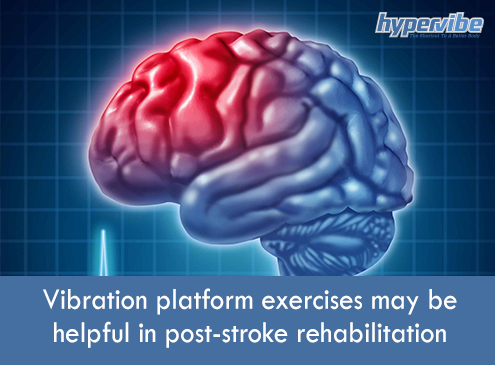
Stroke may affect the body in different ways, some people experiencing minor health effects, while others are left with serious health problems or permanent disabilities. Some of the most common physical problems occurring after a stroke include movement and balance problems caused by muscle weakness or paralysis, pain and discomfort, difficulty swallowing, vision problems, altered bladder, and bowel function or fatigue.
Besides these unpleasant symptoms, stroke survivors may also experience communication problems like aphasia, poor short-term memory, concentration problems, anxiety, and depression. Changes in behavior are common as well, although the intensity of all these manifestations and their duration depend on the severity of the stroke.
Since conventional rehabilitation exercises may be difficult to practice for someone who’s just survived a stroke, it’s a good idea to consider alternative therapies like whole body vibration for speeding up the physical recovery and relieving some of the symptoms.
Exercising on a vibration platform is a low-impact activity that doesn’t require too much effort from the patient, and it’s a safe form of therapy, so from this point of view WBV is more than recommended. But it’s not only the safety and convenience of this method that support the use of vibration exercises in post-stroke rehabilitation programs.
According to scientists from Korea and China, exercising on a vibration machine may improve balance and motor function of chronic stroke survivors, contributing to stronger muscles at the same time. In the first study the patients performed 15 minutes of vibration therapy 3 times per week, for 6 weeks, followed by 30 minutes of rehabilitation exercises. In the second study, participants performed 8 different WBV exercises, parameters varying from 20 Hz and 0.96G to 30 Hz and 1.61G.
Researchers from Hungary found that a single session of vibration therapy may increase voluntary muscle strength in stroke survivors. Participants performed 6 bouts of 1 minute of WBV per session, at an amplitude of 5 mm and a frequency of 20 Hz.
Short-term improvements in postural control may also be experienced following whole body vibration therapy, although research is still needed for determining whether this leads to a reduction in fall risk and to improved physical function in the long run.
This study for example found that vibration therapy done for 6 weeks is not more effective in terms of recovery of balance and activities of daily living than conventional exercise therapy in the postacute phase of stroke.
Researchers from Australia found vibration therapy to significantly increase leg muscle activity in chronic stroke patients, while scientists from China concluded that exercising on a vibration platform does not significantly affect gait performance or mobility in stroke survivors.
Another paper supports the addition of WBV therapy to post-stroke rehabilitation programs, showing that this form of therapy may be a feasible and safe way to increase muscle strength and postural control in adults with chronic stroke.
Given that the results obtained in these studies vary and there’s no standard protocol for stroke survivors, it’s recommended to discuss with your physician if you want to add vibration therapy to your recovery program post-stroke. Here you can learn more about the benefits of WBV therapy: vibration training for bones and muscles, WBV for rehabilitation and recovery.
Have something to add to this article? Comment below or join our Facebook community and share your thoughts with us.

Updated on: 08.09.2021 The lymphatic system is involved not only...

Stress can make you gain weight – we’ve heard this...

Various theories exist to answer this question. As you will...

Both rebounding and jumping on a trampoline are excellent ways...

The health benefits of using vibration plates to burn fat...